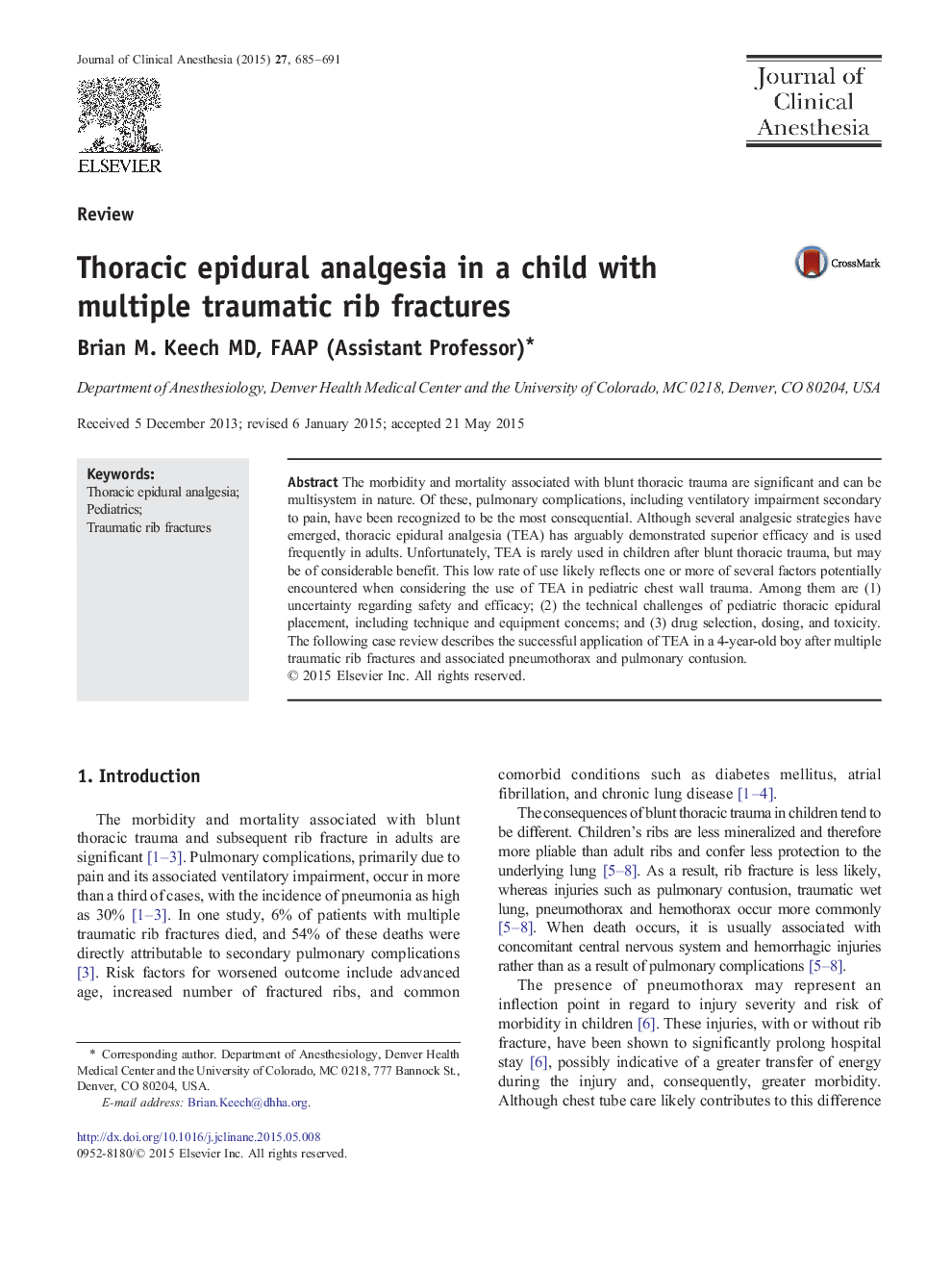| Article ID | Journal | Published Year | Pages | File Type |
|---|---|---|---|---|
| 2762203 | Journal of Clinical Anesthesia | 2015 | 7 Pages |
The morbidity and mortality associated with blunt thoracic trauma are significant and can be multisystem in nature. Of these, pulmonary complications, including ventilatory impairment secondary to pain, have been recognized to be the most consequential. Although several analgesic strategies have emerged, thoracic epidural analgesia (TEA) has arguably demonstrated superior efficacy and is used frequently in adults. Unfortunately, TEA is rarely used in children after blunt thoracic trauma, but may be of considerable benefit. This low rate of use likely reflects one or more of several factors potentially encountered when considering the use of TEA in pediatric chest wall trauma. Among them are (1) uncertainty regarding safety and efficacy; (2) the technical challenges of pediatric thoracic epidural placement, including technique and equipment concerns; and (3) drug selection, dosing, and toxicity. The following case review describes the successful application of TEA in a 4-year-old boy after multiple traumatic rib fractures and associated pneumothorax and pulmonary contusion.
